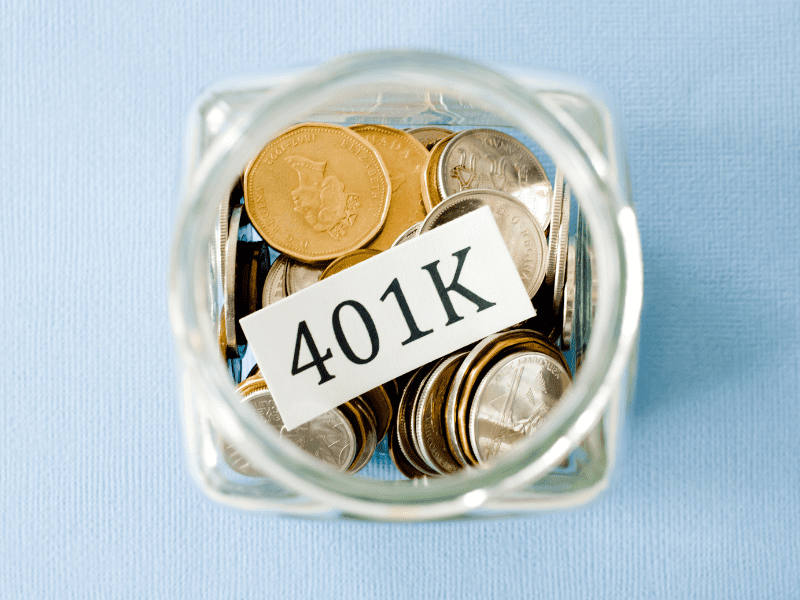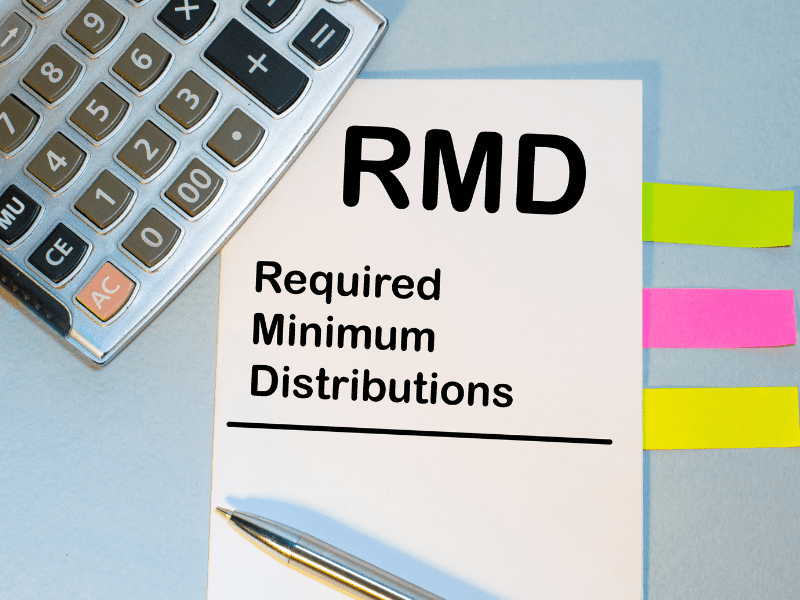Roth IRA Conversions-Frequently Asked Questions
We often receive Roth conversion questions from people who visit our website. Below are a few of the most common questions.
As we see more Roth IRA questions, we will continue to update this page. If you have a question, please share it with us in the comments below and we will do our best to answer it!
Contents
1. Can I do Roth conversions in retirement?
Yes. Your adjusted gross income (AGI) impacts your ability to directly contribute to make Roth IRA contributions. However, AGI does not impact your ability to perform Roth conversions.
You can do Roth conversions at any time. In fact, some of your best Roth conversion opportunities might come after you have retired.
2. Can I do Roth conversions if I have no earned income?
Yes. You cannot directly contribute to individual retirement arrangements (IRA) without earned income. However, you can do Roth conversions, even if you have retired.
In years where you have little or no earned income (layoffs or going back to school, for example), you might actually be in a great position to do Roth conversions. The younger you are, the more you will benefit from a lifetime of compounding, tax-free growth.
3. Can I do Roth conversions after age 72 when I start taking RMDs?
Yes, you can do Roth conversions in a year where you also take required minimum distributions (RMDs). There is no age limit for Roth conversions.
The only change is that you must withdraw your RMD before doing any Roth conversions. After that, any remaining distributions can be Roth conversions if you wish.
For example, let’s say you have a Roth conversion strategy. Normally, you’re doing Roth conversions of $50,000 per year, throughout your 60s and early 70s.
Fast forward to when you turn 72. Your first RMD is $30,000. The only requirement is the $30,000 RMD.
After that, you can:
- Do a Roth conversion of the remaining $20,000. This would allow you to keep your current-year withdrawal taxes at the same level—based upon the $50,000 in your plan.
- Do a Roth conversion of the entire $50,000. This would allow you to empty your IRA faster, but you would need to keep an eye on your tax bracket.
- Pick a different option, based upon any applicable changes in your Roth conversion strategy.
4. Can I do Roth conversions on inherited IRAs?
Unfortunately, you cannot. With that said, there are a couple of things worth pointing out about an inherited IRA.
- You can use the after-tax proceeds of inherited IRA distributions to fund your Roth IRA contributions. This might help if cash flow is a concern. As long as you have earned income, you could withdraw money from your inherited IRA and contribute directly to your Roth IRA account.
- It is possible to inherit a Roth IRA. In that case, a Roth conversion would be unnecessary.
- With the passing of the SECURE Act, most IRAs inherited after January 1, 2020 are subject to a 10-year distribution rule. If you’re worried about moving into a higher tax bracket, talk with your tax advisor.
5. Can I do Roth conversions more than once?
Yes. You can do Roth conversions as many times as you want. There is no limit.
In fact, you might benefit from a multi-year Roth conversion plan. This is especially true if you want to keep your taxable income low and stay in a lower tax bracket.
6. Can I do Roth conversions multiple times in one year?
Yes. Not only can you can do Roth conversions as many times as you want, but you can do multiple conversions in the same tax year.
This might be good news for people who decide:
- They know they want to convert a certain amount, but they might want to do more after they run a tax projection later in the calendar year.
- The stock market might be headed lower, and they’re interested in Roth conversions in a down stock market.
A Roth conversion is technically considered a rollover. However, it does not count as a rollover for the IRA ‘One Rollover Per Year Rule,’ as long as your Roth conversion meets the rollover requirements.
7. If I do a Roth conversion, can I move the money back into my IRA?
This is known as a recharacterization.
Unfortunately, you cannot recharacterize a Roth conversion made after December 31, 2017. Once the money from your conversion is in your Roth IRA, it cannot go back.
8. Are there income limitations for Roth conversions?
There are no income limits for Roth conversions.
However, there are income tax considerations, and it’s worth considering what the right tax bracket might be for your strategy. The higher your taxable income, the higher your tax bracket you’re likely to be in.
And the higher your tax bracket, the more you will pay to convert the same amount of money.
For example, someone in the 22% tax bracket will pay $11,000 in taxes to make a $50,000 Roth conversion. Someone in the 12% tax bracket will pay $6,000 to make the same conversion.
9. Can I do Roth conversions from a 401(k)?
You can convert any funds from any employer-sponsored retirement plan (like a 401k or 403b), if those funds are eligible for a qualified distribution or rollover.
There are federal regulations that provide some general guidance. However, your plan’s summary plan document (SPD) will cover many of the details.
For example, an employer plan cannot limit your ability to withdraw (or rollover) vested assets after you have retired or left the company.

However, it can get tricky. For example, let’s say you have pre-tax and post-tax (Roth) contributions in your 401k. If this is the case, you might have to transfer your pre-tax contributions to a traditional IRA and your Roth contributions to a Roth IRA. Or you might have multiple 401k plans and don’t know where to begin.
If that’s the case you might want to seek tax advice from your accountant before trying to do this yourself.
10. Can I do Roth conversions from a SIMPLE IRA?
Traditional IRAs (which include rollover IRAs), SEP IRAs, SARSEP IRAs, and SIMPLE IRAs can all be converted to a Roth IRA.
For a SIMPLE IRA plan, there is a 25% penalty on any funds withdrawn within the first 2 years of the plan participation. After the 2-year period, you can make any Roth conversions without penalty.
11. How do I pay taxes on Roth conversions?
You can pay taxes on Roth conversions in one of two ways:
- Have your account custodian withhold taxes from your IRA withdrawal and remit them to the IRS on your behalf. While this might result in less money ending up in your Roth IRA, it’s an option for people who don’t have outside money for the higher tax bill.
- Pay the taxes yourself with outside money. This is a more tax-efficient option, because it allows you to keep more of your IRA contributions inside your IRA.
12. Do Roth IRAs have RMDs?
For your Roth IRA, there are no RMDs, or required minimum distributions. RMDs are only for non-Roth retirement accounts.
If you inherited a Roth IRA before January 1, 2020, then you may be subject to RMDs.
If you inherited a Roth IRA on January 1, 2020 or later, then most non-eligible beneficiaries will be forced to draw down the Roth IRA balance to zero by the end of the 10th year after the owner’s death.
13. Is there a deadline for Roth conversions?
There is no deadline for Roth conversions. Roth conversions are completely voluntary, so there is no associated deadline.
However, taxpayers must calculate the income tax associated with a Roth conversion in the tax year that they performed the Roth conversion.
14. Is there a deadline for the taxes on my Roth conversions?
Normally, the deadline for individual tax returns in a given tax year is April 15 of the year following the tax year being reported. In some cases, if April 15 falls on a weekend or holiday, the deadline will be the next business day.
For example, the 2017 tax return deadline was April 17, 2018 because April 15 fell on a Sunday, and April 16 fell on Emancipation Day, which was a legal holiday in Washington DC.
You can file for extensions beyond the tax return filing deadline. Taxpayers must calculate and pay any estimated taxes on or before the filing deadline. Any unpaid taxes may be subject to penalties and interest based upon IRS determination.
15. What tax forms are involved in a Roth conversion?
You can expect the following forms for each year in which you do a Roth conversion:
1099-R (Distributions from Pensions, Annuities, Retirement or Profit-Sharing Plans, IRAs, Insurance Contracts, etc): Form 1099-R is issued by your account custodian to report the distribution from your retirement account.
For Roth conversions, you’ll want to see a couple of things in your Form 1099-R:
- Box 2b (Taxable amount not determined). This will probably be checked as this transaction must be reported by the financial institution. However, the tax calculation is the taxpayer’s responsibility.
- Box 7 (distribution code) is marked either Code 2 (if you are age 59 ½ or younger) or Code 7 (if you’re age 59 ½ or older). This means that your distribution might be taxable, but not subject to the 10% early withdrawal penalty.
- 8606 (Non-deductible IRAs): Form 8606 is used to report Roth conversions. Even though this form is titled for non-deductible IRAs, you (the taxpayer) will report your Roth conversions on this form. You do this in either:
- Part I (if you made nondeductible contributions AND Roth conversions, like a backdoor Roth conversion)
- Part II (Roth conversions only).
- 5498 (IRA Contribution Information-Info Copy Only): Form 5498 is not used for your tax return, but it is issued by your account custodian for informational purposes.
To summarize, your custodian should issue Form 1099-R and Form 5498. The taxpayer is responsible for filing Form 8606 with their tax return.
16. Does my accountant need to know about my Roth conversions?
Yes. Usually, this will be a question that is asked in your accountant’s questionnaire.
However, if you don’t tell your accountant that your Form 1099-R was a Roth conversion, he or she might not know to file Form 8606, which is a required part of your tax return.

Tax-focused financial advisors help their clients get the required documentation ahead of tax season. If you’re working with an advisor, you should expect this shortly after the end of the tax year.
17. What is the best way to do a Roth conversion?
The most preferable way to do a Roth conversion is by either trustee to trustee transfer or by same trustee transfer. If possible, you should strive to avoid receiving a distribution check and doing a 60-day rollover.
According to the IRS, you can do a Roth conversion in one of three ways:
- 60-day rollover:
- You receive a distribution check from the first IRA and deposit the check into a Roth account within 60 days.
- If you hold your check for more than 60 days, then it may be considered a taxable event. Non-qualified withdrawals may be subject to early withdrawal penalty. This usually happens if the IRA owner is not at least 59 1/2 and does not meet any early withdrawal criteria.
- Because the taxpayer is fully responsible for meeting the 60-day requirement, many tax professionals recommend that you use a trustee-to-trustee or same trustee transfer.
- Trustee to trustee:
- You can ask the financial institution holding your traditional IRA to directly transfer the funds to a different IRA custodian.
- Different institutions have different processes, so you may need to consult with your financial advisor to get additional information.
- Same trustee transfer: This is similar to the trustee-to-trustee transfer, except both IRA accounts are held at the same financial institution.
18. I have an account with nondeductible IRA contributions in it. Can I do a Roth conversion tax-free?
If your IRA has only nondeductible IRA contributions, then those contributions can be converted tax-free.
However, if you’ve held nondeductible IRA contributions for several years, then it’s likely that you have a combination of contributions and investment earnings on those contributions. In that case, Roth conversions become a little more complicated.
19. I have an account with nondeductible AND deductible IRA contributions in it. Can I do a Roth conversion tax-free?
Not fully tax free. Your nondeductible contributions will be converted without tax consequences. However, you must pay ordinary income tax on any deductible traditional IRA contributions as well as all earnings in the account.
In this case, one of two things will happen:
- You will convert 100% of the account balance. Your nondeductible IRA contributions will not be taxed, but you will pay ordinary income tax on the earnings and deductible contributions.
- You convert part of the balance. In this case, you would convert a pro-rated amount of the taxable balance and non-taxable balance.
For example, let’s say that you have $50,000 in an IRA. $25,000 was from non-deductible contributions and $25,000 was the deductible contribution amount.
- 50% of your IRA is considered after-tax. This means taxes have already been paid and won’t be assessed again (non-deductible contributions).
- 50% of your IRA is considered pre-tax. This means that when the money eventually comes out of your account, it will be taxed at ordinary income rates.
You want to convert $10,000 to your Roth IRA. Using the above percentages, you would pay taxes on $5,000 of that Roth conversion, since ½ of your conversion amount is tax-free, and ½ is fully taxable.
This calculation is done on Form 8606-Nondeductible IRAs.
20. Does the 1-time per year rule apply to Roth conversions?
According to the tax law, you generally cannot make more than one rollover per year from the same IRA. However, this law does not apply to Roth conversions, as long as they are done properly.
21. What is the five-year rule and how does it apply to Roth conversions?
There are two 5-year rules when it comes to Roth IRAs. Only one applies to Roth conversions.
Roth conversion 5-year rule: Treasury Regulation 1.408A-6, Q&A-5(b) states that the 10% penalty applies to an any Roth conversion amount that has been withdrawn within 5 tax years of the deposit, if there is not already an exemption under IRC Section 72(t).
A tax year is defined as having started on January 1st of the year that the Roth conversion was made. In this regard, ‘5 tax years’ usually means ‘4+ tax years,’ but probably not 5 full years. Treasury Regulation 1.480A-6, Q&A-5(c) states that this applies to each Roth conversion amount separately.
Since IRC Section 72(t) applies, this rule is not applicable to anyone who is age 59 ½ or older.
Roth contribution 5-year rule: This applies to the earnings on Roth contributions (and conversions). In order for earnings to be considered tax-free, they must be withdrawn under one of these circumstances:
- After age 59 ½
- After death (to a beneficiary)
- After a disability (according to IRC Section 72(m)(7)
- Under a qualified special purpose distribution
Additionally, the first contribution (not rollover) to a Roth IRA must have been made at least 5 tax years before the withdrawal. This means that even if you are age 59 ½, you may be subject to an early withdrawal penalty if your first contribution was made less than 5 tax years prior to withdrawal.
However, a tax year is defined as January 1 of the tax year for which your IRA contribution was made. Therefore, a contribution made on April 10, 2018 for the 2017 tax year would be considered to have been made on January 1, 2017. If that is the first contribution, then the 5 tax-year rule would be applied to the January 1 date, not April 10.
Unlike the conversion rule, this only applies to the first contribution. Once the five years have passed, this rule does not apply again.
22. If I do Roth conversions but pass away with money left in my IRA, do my children have to pay taxes?
No. If your children inherit a Roth IRA, then they do not pay taxes. In fact, many people consider paying taxes on Roth conversions so their beneficiaries don’t have to.
While your children do not have to pay tax dollars on an inherited Roth IRA, the SECURE Act IRA distribution rules would apply for any IRAs inherited after December 31, 2019. This means that unless the beneficiary is an eligible designated beneficiary, most inherited Roth IRAs must be completely distributed no later than 10 years after the end of the year in which the owner died.
For example, Bob Smith had a Roth IRA. He died on May 1, 2020, and his son, Bob Junior, inherits the account.
Unless Bob Junior is considered an eligible designated beneficiary, his account would have to be completely distributed by December 31, 2030.
How Bob Junior does this (whether he takes it all at once, a little each year) is not regulated, as long as the account is completely distributed by the end of the 10-year period after Bob Senior’s death.
23. Can you do Roth conversions within a trust?
If you are the person who established an IRA (either traditional or Roth), then you cannot have an IRA inside a trust while you are alive.
The IRA (Roth or traditional) is registered in the name of the account owner.
A trust can be named the beneficiary of an IRA, after the account owner passes away. However, the IRA then becomes an inherited IRA. Roth conversions cannot be done from non-spousal inherited IRAs.
24. Can I reverse a Roth conversion?
Unfortunately, no. The Tax Cuts and Jobs Act of 2017 eliminated the ability to reverse Roth conversions (also known as recharacterizations).
The only recharacterizations that are allowed are for Roth contributions.
25. How do I recharacterize Roth contributions?
According to the IRS, you can direct your financial institution to transfer the amount of the contribution (plus earnings) to a different type of IRA (either a Roth or traditional) in a trustee-to-trustee transfer or a different type of IRA with the same trustee.
As long as this is done by the due date of that year’s tax return (including extensions), then you can treat the contribution as if you originally made it to the second IRA (and ignore the first IRA contribution).
For example, John Smith originally makes a $5,000 Roth contribution. In February, his accountant tells him that he is over the income limit for Roth contributions. John can direct his financial institution to recharacterize the $5,000 (plus any earnings) to his traditional IRA.
26. Can I make a Roth contribution in the same year as I do a Roth conversion?
Perhaps. However, the Roth contribution limits (for both contribution amounts and AGI levels) still apply.
If your tax situation would otherwise allow you to make Roth contributions, then you can do Roth conversions. Be mindful that Roth conversions might push you over the income limits for Roth contributions.
Conversely, Roth contributions have no impact on your ability to do a Roth conversion. You can always do Roth conversions, regardless of your income level.
27. How does my decision on when to take Social Security impact my Roth conversions?
Although Social Security is treated differently from other income sources, it is considered when calculating your income tax. The earlier you decide to start taking Social Security, the sooner you will have to account for this in your Roth conversion strategy.

If you delay taking Social Security until age 70, you can allow for more room within your desired tax bracket. Since your Social Security benefits stop growing after age 70, it makes no sense to delay beyond then.
28. What if I need to withdraw money from my IRA for living expenses?
That’s perfectly normal. Your IRA is designed to support your living expenses in retirement. Here are a couple of considerations:
Taxes for withdrawals are the same as for Roth conversions. Assuming that you meet one of the IRS’ requirements for exceptions to the 10% penalty rule, withdrawals from your IRA are taxed exactly the same as Roth conversions. For example, if you are 60, and withdrew $10,000 from your IRA, you would pay the same amount of taxes as if you had converted $10,000.
The 10% penalty tax doesn’t always apply to people under 59 1/2. While most people are familiar with the 59 1/2 rule, there are other exceptions. One thing to keep in mind–the 10% penalty exceptions are different for IRAs and qualified employer plans (such as 401ks, 403bs, etc.). The below IRS chart shows more detail:
You may want to make adjustments to your Roth conversion strategy. For example, let’s imagine that your Roth conversion strategy showed $20,000 in Roth conversions this year. However, you decide that you need $10,000 in living expenses. You can do one of two things:
Lower your Roth conversions accordingly. $10,000 in withdrawals and $10,000 in Roth conversions would still leave you with $20,000 in taxable distributions–the same as the original plan.
Do both, and adjust your strategy. $10,000 in withdrawals and $20,000 in Roth conversions would leave you with $30,000 in taxable distributions, or $10,000 more than originally planned.
29. Do Roth conversions count as an RMD?
No. You can take Roth conversions even after you have to start taking RMDs. However, you must satisfy your RMD requirement before doing any Roth conversions.

Also, since you cannot do Roth conversions from an inherited IRA, you can’t use them to satisfy your RMD requirement (for inherited IRAs established before January 1, 2020).
30. How many Roth IRAs can I have?
You can have multiple Roth IRAs, if you wish, as long as you follow the IRS guidelines. However, there aren’t any tax advantages to having multiple Roth IRAs.
You end up with more than one Roth IRA if you inherit one. If you inherit a Roth IRA from your spouse, you may:
- Treat it as your own
- Roll it into your own
- Keep it separate and treat it as an inherited Roth IRA. This might be an option if you are under 59 1/2 and might need to make withdrawals. That way, you can do so without withdrawal penalty.
31. Are Roth IRA distributions taxable?
Qualified Roth IRA distributions are tax-free withdrawals as long as they follow IRS guidelines.
However, Roth IRA distributions that are deemed to be nonqualified can be subject to income tax and penalties.
32. What’s the difference between an individual retirement account and an individual retirement arrangement?
Technically, there is no difference. Most people (and many institutions) refer to IRAs as ‘Individual Retirement Accounts.’ However, the IRS refers to them as ‘Individual Retirement Arrangements.’
33. Do I pay capital gains tax on Roth conversions?
Capital gains taxes do not apply to Roth conversions.
34. Is there a maximum amount of Roth conversions I can do?
There is no maximum limit on Roth conversions, either by dollar amount, or number of transactions.
35. Are there any investments that I cannot include in Roth conversions?
According to the tax code, no.
However, your financial institution might have limitations on investments that can be transferred. Many financial advisors have the ability to transfer investments on their clients’ behalf without liquidating them. This might include:
- Stocks
- Mutual funds
- Exchange-traded funds
- Certificates of deposit
You probably won’t be able to transfer highly illiquid IRA assets, like real estate. However, you need to check with your IRA custodian.